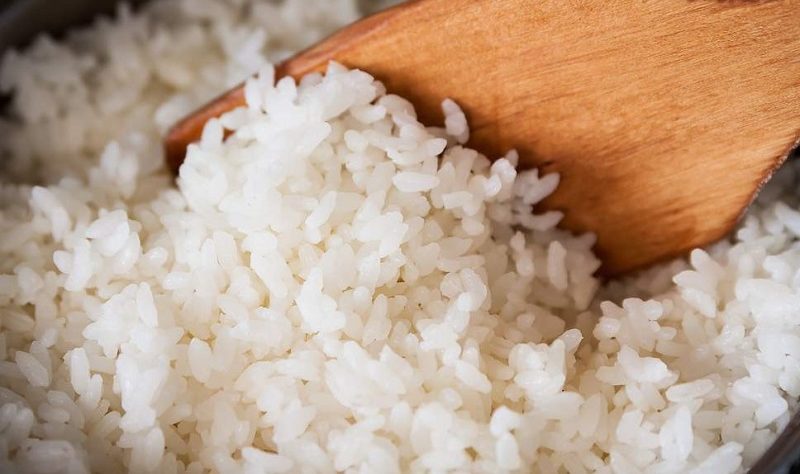It’s a shame if we have to throw away food that has not been finished at dinner, especially if the food can still be warmed and consumed the next day. Such action is not only part of the nature of frugality, but, it turns out, has health benefits. Chemical reactions that occur when food is stored overnight have many positive benefits. For example, yesterday’s leftover rice has 60 percent fewer calories than freshly cooked rice. However, if we want to eat rice yesterday, we still need to cook it properly. One of the recommended ways to cook rice is to add a little coconut oil after the water boils before adding the rice to the pot. Once cooked and cool, put the rice in the refrigerator for 12 hours. If freshly cooked rice is eaten immediately, starch will be converted into sugar or glucose by the body. This glucose, if not burned immediately, will be stored as fat. Meanwhile, if the rice is left overnight, the starch will be converted into resistant starch which the body cannot digest. This means the calories will not add up. The addition of coconut oil will also make yesterday’s rice less sticky and produce more resistant starch in the rice. Even so, reheating rice is not really recommended. “Bacillus cereus bacteria found in rice can survive during the cooking process. When the rice is cold, the spores will multiply and produce neurotoxins that can make you sick,” says Martin Goldberg, a microbiologist.
In addition to rice, bone soup also contains many benefits, especially the beauty of the skin. Collagen in the bones will be broken down into gelatin and easily digested by the body so that it is beneficial for the skin. In order for the benefits to be more optimal, it is recommended to let the bone soup stand before eating it. This process will make the minerals contained in the bones, such as calcium, magnesium, and marrow, more easily absorbed by the body. Heat the soup only once and not too hot, or about 60 degrees to kill the bacteria. This means separating the soup in a small saucepan each time it is heated. Another food that has a higher nutritional value if it is not consumed after it is cooked is potatoes. Potatoes that are refrigerated after cooking will contain more starch. These starches are known to have benefits, such as dietary fiber, which helps prevent colon cancer, increases satiety, and even reduces fat stores. Likewise with pasta. Consumption of these foods after being heated turns out to make blood sugar not too high. This means it is quite safe for diabetics. “Freshly cooked pasta is carbohydrates that will be broken down into sugar in the intestines. This will increase blood sugar levels, causing a spike in insulin levels. Fluctuations like this over time will trigger diabetes mellitus,” said Sam Christie, food researcher. Well, cooling and then reheating pasta before eating according to Christie will make it more resistant to normal enzymes in the intestines. “This resistant starch has a low glycemic index so it doesn’t quickly raise blood sugar levels,” he said.
How to Save Leftover Rice
However, if you are used to using a rice cooker and often have leftover rice, at night immediately transfer the leftover rice to another container, then store it in the freezer.
Why the freezer? Because the freezer is the part of the refrigerator that is cold, but dry. The rice in the freezer will be tastier. Don’t store it on a refrigerator or chiller rack because rice can get wet and go stale faster so it can’t be processed anymore. Do not also store at room temperature, because the rice will be stale the next day.
Leftover rice, glucose or sugar levels are lower than freshly cooked rice. In this way, leftover rice is more recommended for those who have diabetes problems.
Even so, reheating rice is not really recommended. Reporting from Independent.co.uk, the National Health Service (NHS), a public health service in England, Wales and Scotland, we can experience food poisoning if we eat leftover rice yesterday. Even though the rice has been reheated. But the problem is, food poisoning is not because the rice has been reheated or not. But how is rice stored after being cooked for the first time.
Rice often contains Bacillus cereus spores, cells that are capable of reproducing rapidly and can turn into strands of bacteria. If the rice is left at room temperature after cooking, the spores can grow into bacteria, which will eventually multiply. “Bacillus cereus bacteria found in rice can survive during the cooking process. When the rice has cooled, the spores will multiply and produce neurotoxins that can make you sick,” says Martin Goldberg, a microbiologist.
This is what can cause us to experience poisoning or vomiting and diarrhea. So, it is very important to know how to store rice in the right way and be able to reheat it later.
The NHS recommends: Serve rice immediately after cooking; Refrigerate leftover rice as quickly as possible (ideally an hour); Store rice in the refrigerator (but no longer than a day) before reheating; and Do not heat leftover rice more than once.
The need for digital IT is needed in daily activities, Bead IT Consultant is the right choice as your partner, visit our website by clicking this link: www.beadgroup.com

